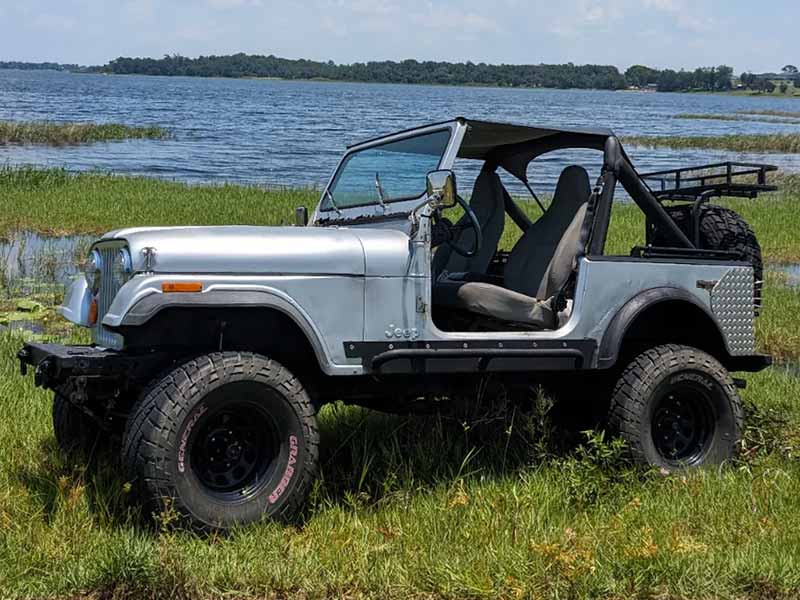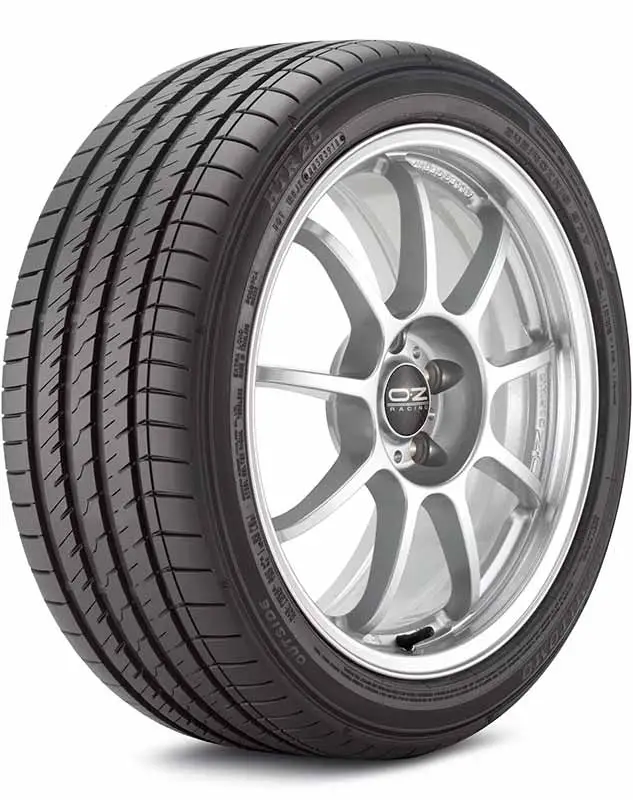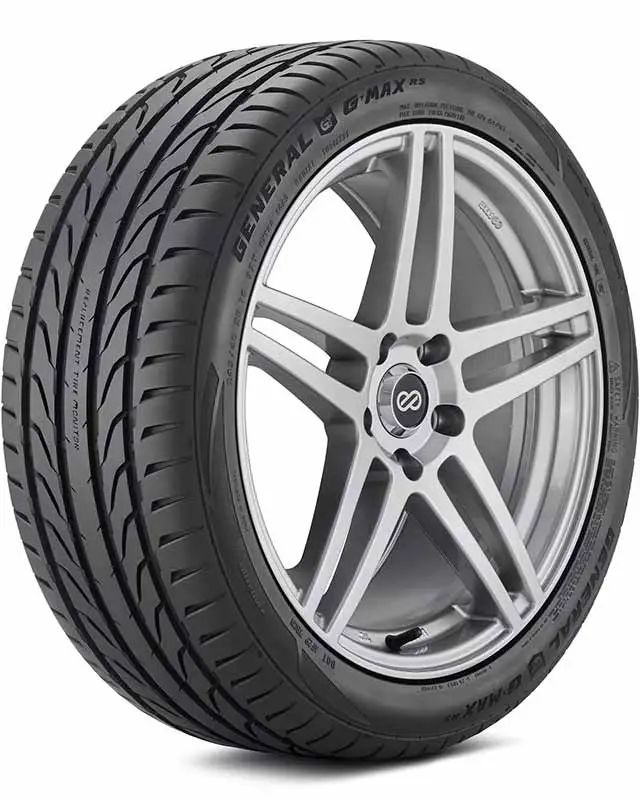Ever wonder just how much air you should let out of your tires before an off-road adventure? Understanding when and how much to deflate your tires can transform your off-roading experience, offering better traction, vehicle control, and tire protection.
When To Deflate Tires For Off Roading
To optimize off-roading performance and protect your tires, deflate your tires to the recommended pressure specific to your vehicle and the terrain type, typically ranging between 15-20 psi, but never below the safe limits set by your tire manufacturer.
In this article, you will discover the science and strategy behind tire deflation for off-roading, learn the pros and cons, understand the practical steps for safely airing down and up, and gain insights from real-life case studies and expert opinions to confidently navigate any terrain.
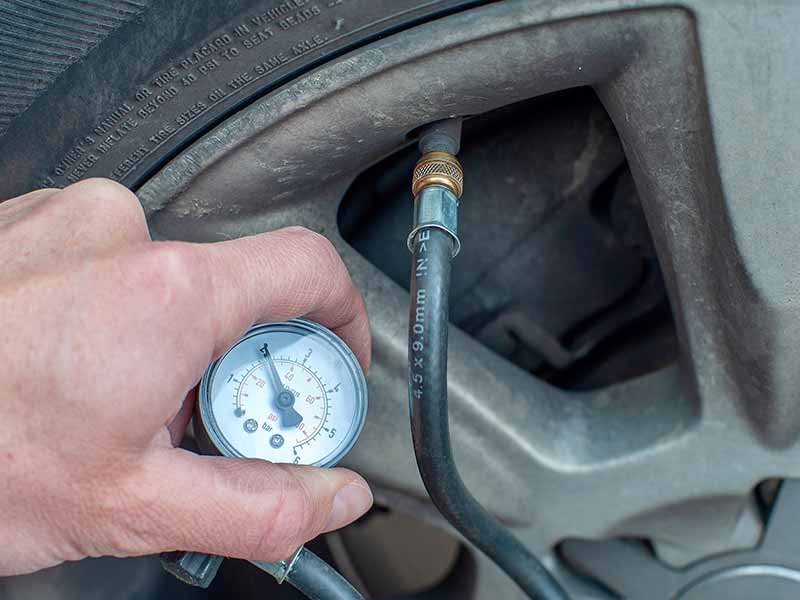
When to Air Down Tires
Choosing when to deflate your tires is more of an art guided by science. It’s about understanding your vehicle, the terrain ahead, and how different surfaces interact with your tires. Here’s a guide on when it’s time to air down and how to do it safely and effectively.
Criteria for Deflating: Terrain Types and Driving Conditions
- Sand Driving: When you’re facing a stretch of beach or desert, lower tire pressure can prevent you from becoming bogged down. The softer the sand, the lower you’ll want to go.
- Rock Crawling: Airing down in rocky terrain increases the tire’s footprint and allows it to contour around rocks, improving grip and reducing bounce.
- Mud Trails: Lower pressure helps create a wider, flatter tire surface that can paddle through mud more effectively.
- Snow and Ice: A deflated tire can provide a larger surface area for better traction, especially useful in softer snow conditions.
Airing Down Without Beadlocks
- What are Beadlocks? Beadlocks are mechanical devices that clamp the tire bead to the wheel, preventing it from slipping off at low pressures. If your vehicle doesn’t have beadlocks, you can still air down, but with more caution.
- Without Beadlocks: It’s crucial to maintain enough pressure to keep the tire seated on the rim. Typically, you shouldn’t go below 15-20 psi without beadlocks, but this varies based on tire and vehicle specifics.
How to Air Down
- Use a Quality Tire Gauge: Always use an accurate tire gauge to check your pressure as you deflate.
- Deflate in Stages: Lower your pressure gradually and check how the vehicle handles. Sometimes a small change makes a big difference.
- Check Regularly: If you’re on a long trail, periodically check your tire pressures to ensure they’re consistent and safe.
Safety First
- Never Exceed Recommended Limits: Always stay within the manufacturer’s recommended tire pressure limits to avoid damage or accidents.
- Be Prepared to Inflate: Always carry a portable air compressor or have access to air to reinflate your tires to the proper pressure before hitting the pavement again.
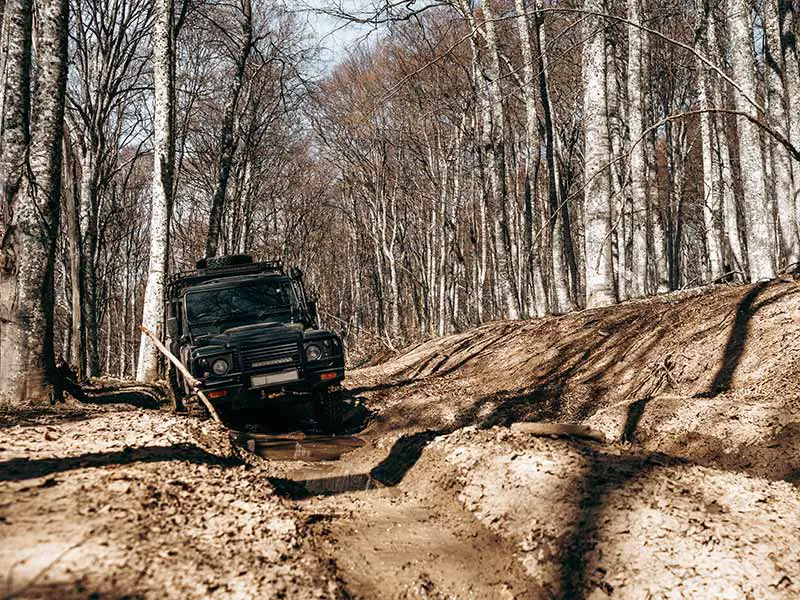
How Much Should You Air Down Your Tires
Deciding how much to air down your tires is crucial for maximizing off-road performance while ensuring safety. This section dives into the specifics of determining the right amount of air pressure reduction for various off-road conditions.
General Guidelines for Tire Deflation
- Understand Your Baseline: Know your vehicle’s standard recommended tire pressure for everyday driving—it’s your starting point.
- Typical Range: For most off-road situations, tire pressures might range between 15-20 psi, but this can vary significantly based on factors like vehicle weight, tire size, and terrain.
- Consult Manufacturer’s Recommendations: Always refer to your tire and vehicle manufacturer’s guidelines for the minimum safe tire pressure.
Using an Off-Road Tire Pressure Chart
- What is It?: An off-road tire pressure chart provides a starting point for how much you should deflate your tires based on various factors including vehicle weight, tire size, and terrain type.
- How to Use: Input your specific details to get a suggested pressure range. Adjust within this range based on actual conditions and personal experience.
| Vehicle Weight | Terrain Type | Recommended Tire Pressure (psi) |
|---|---|---|
| Light (<3500 lbs) | Sand | 12-15 |
| Medium (3500-5500 lbs) | Sand | 15-18 |
| Heavy (>5500 lbs) | Sand | 18-20 |
| Light (<3500 lbs) | Mud | 15-18 |
| Medium (3500-5500 lbs) | Mud | 18-22 |
| Heavy (>5500 lbs) | Mud | 20-25 |
| Light (<3500 lbs) | Rocky | 17-20 |
| Medium (3500-5500 lbs) | Rocky | 20-25 |
| Heavy (>5500 lbs) | Rocky | 25-30 |
| Light (<3500 lbs) | Snow | 10-15 |
| Medium (3500-5500 lbs) | Snow | 15-20 |
| Heavy (>5500 lbs) | Snow | 18-22 |
| Light (<3500 lbs) | Gravel | 22-26 |
| Medium (3500-5500 lbs) | Gravel | 26-30 |
| Heavy (>5500 lbs) | Gravel | 28-32 |
| Light (<3500 lbs) | Trail | 18-22 |
| Medium (3500-5500 lbs) | Trail | 22-26 |
| Heavy (>5500 lbs) | Trail | 25-30 |
Factors Affecting How Much to Air Down
- Vehicle Weight: Heavier vehicles may need slightly higher pressures to support the extra weight.
- Tire Size and Type: Larger, wider tires might need less deflation, as they naturally have a larger contact patch.
- Terrain Specifics: Softer surfaces like sand might require significantly lower pressures than firmer surfaces like packed dirt or gravel.
Practical Deflation Tips
- Go Slowly: Air down slowly, checking the pressure regularly to avoid going too low.
- Field Test: Test drive a short distance on the terrain to check how the vehicle handles with the new tire pressure.
- Monitor Tires: Look for bulging sidewalls (a sign of too low pressure) or tires that don’t seem to flex (too high).
Safety Considerations
- Avoid Extreme Deflation: Extremely low tire pressures increase the risk of tire bead separation or damage, especially without beadlocks.
- Road to Trail Transition: Remember to re-inflate your tires to safe road-going pressures before driving at highway speeds again.
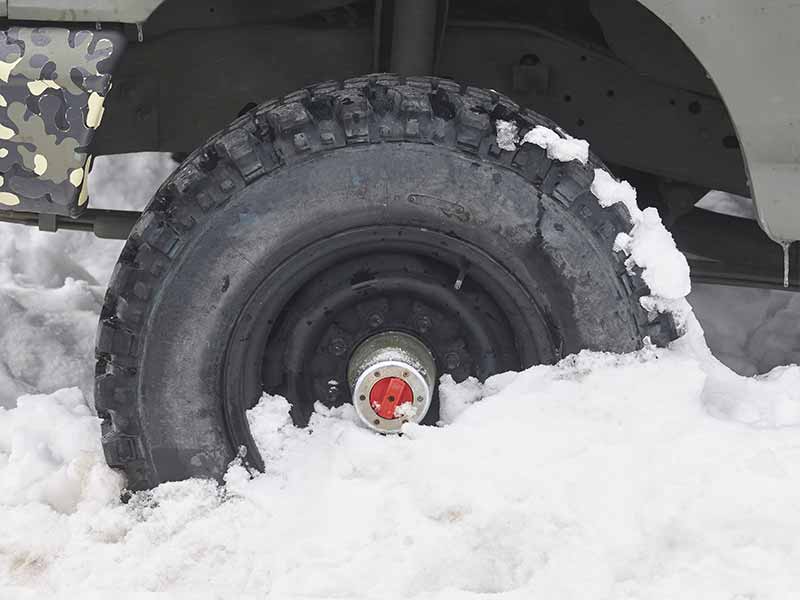
How to Safely Deflate and Inflate Tires for Off-Roading
Airing down your tires for off-roading can significantly improve your experience, but doing it safely is paramount. This section provides a step-by-step guide on how to properly and safely deflate and inflate your tires, ensuring you get the best performance without compromising safety or damaging your equipment.
Step-by-Step Guide to Deflating Tires
- Know Your Numbers: Before you start, know the recommended tire pressure for your off-roading conditions and the minimum pressure advised by the tire manufacturer.
- Use a Quality Air Gauge: Invest in a reliable tire pressure gauge to get accurate readings.
- Deflate in a Controlled Manner: Use a deflator tool or press the pin inside the valve stem to release air slowly. Check the pressure regularly to avoid going too low.
- Check Tires Regularly: As you deflate, periodically check the tire’s sidewall and footprint to ensure an even deflation and avoid over-deflation.
- Do All Tires Evenly: Ensure all tires are deflated to the same pressure for balanced handling and traction.
Inflating Tires After Off-Roading
- Recheck Tire Pressure: Before inflating, recheck the pressure in each tire to understand how much air is needed.
- Use a Reliable Air Compressor: Carry a portable air compressor that can quickly and effectively re-inflate tires to the proper pressure.
- Inflate to Recommended On-Road Pressure: Inflate your tires back to the standard pressure recommended for on-road use.
- Recheck All Tires: Once inflated, double-check all tires to ensure they are evenly and correctly inflated.
- Inspect Tires for Damage: After inflating, do a quick inspection of all tires for any damage or issues caused during the off-roading adventure.
Tools Needed for Tire Pressure Adjustments
- Tire Pressure Gauge: Essential for accurate pressure readings.
- Portable Air Compressor: Necessary for inflating tires on the go.
- Tire Deflator: A tool specifically designed for quickly and accurately deflating tires.
- Valve Stem Tool: Useful for removing the valve core if quick deflation is needed.
Safety Tips and Best Practices
- Never Deflate Below Safe Limits: Always stay within the safe pressure limits to avoid tire and rim damage.
- Inflate As Soon As Possible: Once you’re done off-roading, re-inflate your tires to the appropriate pressure before driving on paved roads.
- Regularly Inspect Your Tires: Check for any signs of damage, wear, or issues after off-roading and before reinflating.
- Be Prepared: Carry all necessary tools and know how to use them effectively in various off-road scenarios.
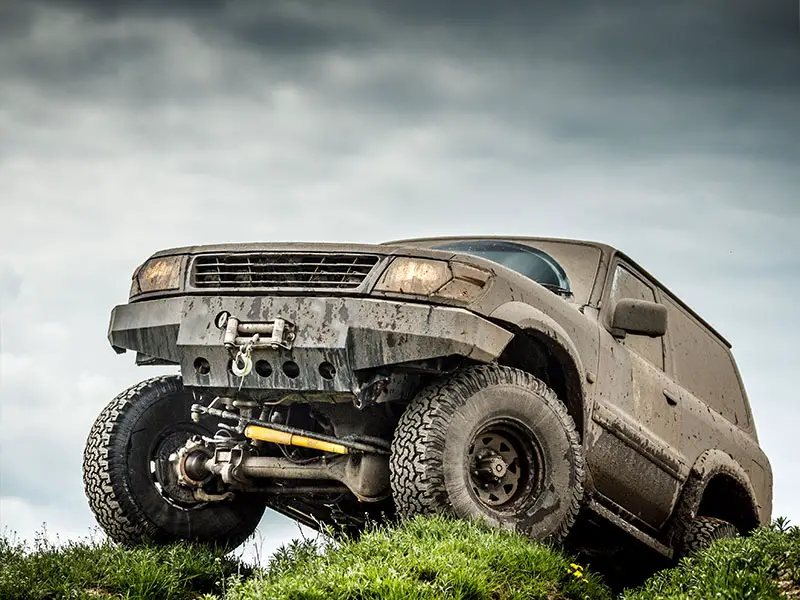
Case Studies and Expert Opinions
Delving into real-life scenarios and expert insights can significantly enhance your understanding of when and how to deflate tires for off-roading. This section highlights some case studies and expert opinions that underline the importance of proper tire pressure management in various off-road situations.
Real-Life Scenarios Where Tire Deflation Made a Difference
- Desert Crossing Success Story: A group of off-roaders successfully traversing a notoriously soft sand desert by significantly airing down, improving their traction and preventing bog-downs.
- Rocky Terrain Navigation: An individual overcoming a difficult rocky trail with no tire damage, attributing success to proper tire deflation allowing for better grip and tire conformity to the terrain.
- Mud Trail Challenge: A case where reducing tire pressure helped an off-roader paddle through deep mud without getting stuck, demonstrating the importance of traction in muddy conditions.
Expert Opinions on Tire Deflation
- Safety First: Experts emphasize never going below the manufacturer’s recommended minimum pressure and always considering the vehicle and tire type.
- Terrain-Specific Advice: Off-roading professionals might provide specific pressure recommendations for different terrains, highlighting the need for flexibility and adaptability in tire pressure adjustments.
- Long-Term Maintenance: Tire and vehicle experts often discuss the importance of proper tire care post-off-roading, including thorough inspections and timely re-inflation.
Key Takeaways from Experts
- Start Conservative: Begin with minor deflations and learn how your vehicle responds before trying more significant pressure reductions.
- Understand Your Equipment: Know the limits and capabilities of your tires and vehicle, and tailor your tire pressure to match.
- Continuous Learning: Stay updated with the latest off-roading techniques and tire technologies to optimize your experiences and safety.
Resources
Below are some links you may find helpful when learning about tires:
- The Best Tire Air Pressure for Off-Roading | Inside Line – DrivingLine
- Airing Down and Back Up the Right Way – Tread Magazine
Final Thoughts
Now that you’re armed with the essential knowledge of when and how to deflate your tires for off-roading, you’re ready to tackle any terrain more effectively and safely.
The right tire pressure can make all the difference in your off-road adventure, offering better traction, improved vehicle control, and reduced risk of tire damage.
Always consider the specific requirements of your vehicle and the terrain, and adjust accordingly.
Good luck and happy motoring.
